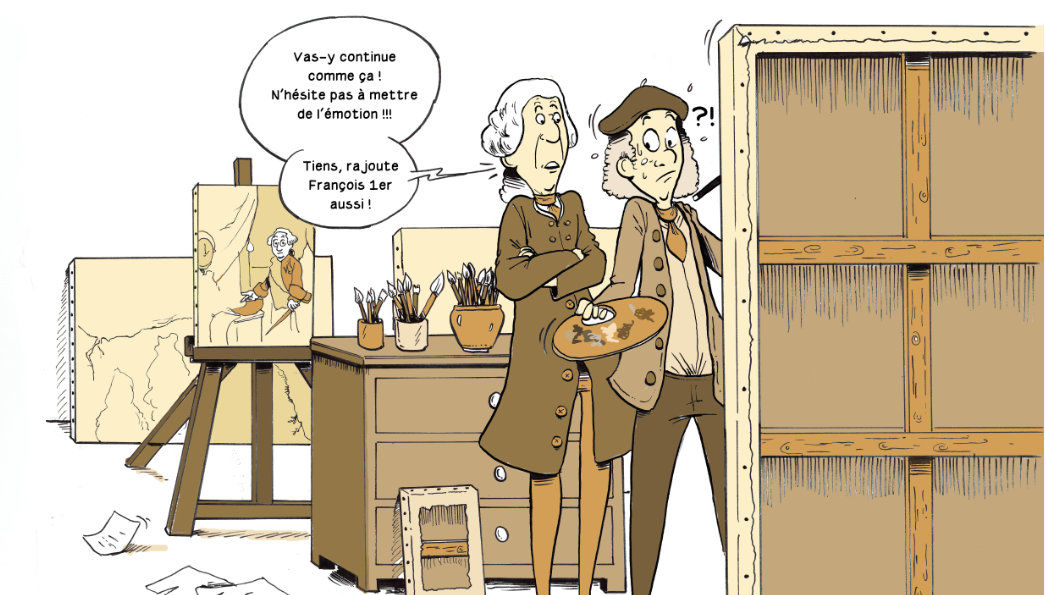The vast canvas by painter François-Guillaume Ménageot, “The death of Leonardo da Vinci” (1781), is one of the Royal Château of Amboise’s treasures.
This work, with impressive dimensions is on display on the first floor of the Royal Loggia, in the king’s bedchamber. It shows the dying moments of Leonardo da Vinci, expiring in the arms of King François Ier. This painting’s highly symbolic nature is strong: it links one of the greatest human geniuses to a sovereign with his place in history as a great protector of the arts.
A revised version of history
While the representation is appealing, it turns out that the story it tells is not historically accurate. We now know that when Leonardo da Vinci passed away on 2nd May 1519 at Clos Lucé, King François Ier was not in the Loire Valley. Written accounts signed by his own hand attest to his presence in the Île-de-France on that day. He had travelled to Saint-Germain-en-Laye for the birth of his second son.
This fictional scene was inspired for the painter and his patron (King Louis XVI) by a story from the 16th century, written by a certain Giorgio Vasari. This “chronicler of the stars” ahead of his time described it with a wealth of detail in a work devoted to 200 artists of that era. Did he want to render reality more beautiful? To glorify in death one of his illustrious contemporaries? On this point, the mystery endures.
A piece of propaganda for the French monarchy
Whatever Vasari’s motives, this revised version of Leonardo da Vinci’s final moments represented an opportunity for the French monarchy, which was struggling in the years before the 1789 French Revolution. Keen to regild the crown’s coat of arms, Louis XVI commissioned a series of large-scale paintings featuring his predecessors in positions of glory, including the painting created by Ménageot.
Presented at the 1781 Salon (the equivalent of our modern-day art fairs), the painting was hugely successful. It was rapidly copied and shared among the population in the form of etchings, engravings, and sketches, thus helping to anchor the reality of the represented scene in society.
There seems little doubt that Ménageot and his backers already knew at the time that this was a rewriting of history. When Jean-Auguste-Dominique Ingres reimagined his own version of the painting’s subject a few years later (in 1818, painting preserved at the Petit Palais in Paris), it was even a certainty!
